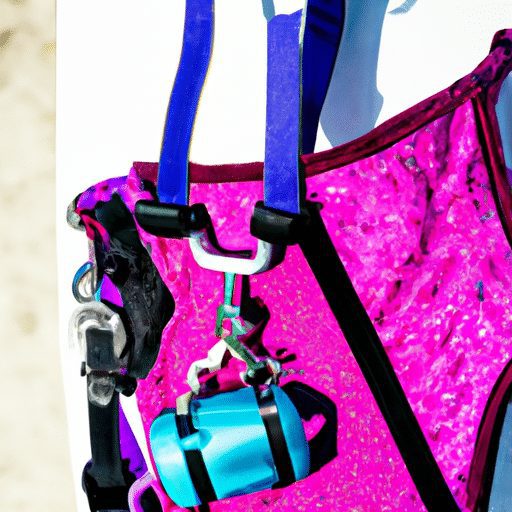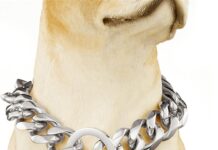A common concern among dog owners is whether it is safe to leave a harness on their beloved companion all the time. We understand the desire to keep your furry friend secure and comfortable, but it is essential to consider the potential risks associated with continuously wearing a harness. In this article, we will explore the advantages and disadvantages of leaving a harness on your dog for extended periods, helping you make an informed decision for the well-being of your four-legged family member.
Can A Harness Be Left On My Dog All The Time?
Understanding Harnesses and Their Purpose
Harnesses are commonly used as an alternative to collars to control and restrain dogs during walks or other outdoor activities. They consist of straps that wrap around the dog’s chest and back, distributing the pulling force more evenly than a collar. It’s important to understand that harnesses serve a specific purpose – to provide a safer and more comfortable way to control your dog, especially during walks.
Different Types of Harnesses
There are several types of harnesses available, each designed for different needs and breeds. The two main categories are back-clip harnesses and front-clip harnesses.
Back-clip harnesses have a D-ring located on the top of the dog’s back and are suitable for dogs that don’t pull excessively. They provide more freedom of movement and are generally easy to put on and take off. On the other hand, front-clip harnesses have a D-ring located at the dog’s chest, redirecting the pulling force to discourage pulling behavior. They are often recommended for dogs with a tendency to lunge or pull during walks.
Benefits of Using a Harness
Using a harness can offer several benefits for both the dog and the owner. Firstly, harnesses provide better control, reducing the risk of choking or injuring the dog’s neck, especially for breeds prone to respiratory problems. Secondly, harnesses distribute the pressure more evenly across the body, minimizing discomfort during walks. Additionally, harnesses can also provide better support for dogs with medical conditions such as arthritis or neck injuries.
Potential Dangers of Leaving a Harness on 24/7
While harnesses are generally safe and effective tools for controlling dogs, leaving a harness on your furry friend all the time can pose potential dangers. One of the main concerns is the risk of chafing and irritation, which can occur if the harness is not properly fitted or if it rubs against the skin for extended periods. This can lead to discomfort, sores, and even skin infections. Another risk is the accumulation of moisture on the dog’s skin, especially in areas covered by the harness. This can create a breeding ground for bacteria and may cause skin problems if left unchecked. Furthermore, leaving a harness on all the time can limit the dog’s natural range of motion and may interfere with activities such as lying down or grooming.
Proper Fit and Comfort
To minimize the potential dangers associated with leaving a harness on all the time, it’s crucial to ensure that the harness fits properly and is comfortable for your dog. A well-fitted harness should snugly wrap around the dog’s body without restricting movement or causing chafing. Pay attention to the straps’ placement, ensuring they are not digging into the skin or rubbing against sensitive areas. Regularly check for signs of wear or damage to the harness, as this can affect its fit and comfort level.
Signs That Indicate the Harness Is Causing Discomfort
It’s important to regularly assess your dog’s comfort level and watch for any signs of discomfort caused by the harness. Common indications that the harness may not be fitting correctly or causing discomfort include excessive scratching or biting at the harness, redness or irritation on the skin, reluctance to walk or exercise, or behavioral changes such as increased anxiety or aggression during walks. If you notice any of these signs, it’s essential to promptly address the issue by adjusting the fit or seeking advice from a professional.
Frequent Removal and Putting on of the Harness
While it may be tempting to leave the harness on your dog all the time for convenience, it is generally recommended to remove the harness when it is not in use. Regularly removing and putting on the harness allows you to inspect and clean the dog’s skin and fur, reducing the risk of irritation or infection. Additionally, giving your pup some time without the harness can also provide a break from any potential discomfort or restriction caused by wearing it continuously.
Considerations for Different Situations
There are certain situations where leaving a harness on your dog all the time may be more appropriate or necessary. For instance, if your dog is undergoing training to correct specific behavioral issues, wearing a properly fitted harness throughout the day can assist in establishing boundaries and reinforcing positive behaviors. Additionally, dogs with certain medical conditions or disabilities may require the support and stability that a harness provides. In these cases, it is important to consult with a veterinarian or professional trainer to determine the best approach for your dog’s unique needs.
Alternatives to Leaving a Harness on All the Time
If leaving a harness on your dog all the time is not suitable or recommended, there are alternative options to ensure your dog’s safety and control during walks. One option is to use a collar along with a leash instead of a harness, ensuring that the collar is fitted correctly and does not cause discomfort or injury. Another alternative is the use of a head halter or gentle leader, which can provide control by gently redirecting the dog’s head and discouraging pulling behavior.
Conclusion
In conclusion, while harnesses offer numerous benefits for controlling and restraining dogs, it is generally not recommended to leave a harness on your dog all the time. The potential dangers of chafing, skin irritation, and limited mobility outweigh the convenience of continuous wear. Proper fit and comfort are essential to minimize any discomfort caused by wearing a harness, and it’s important to be attentive to your dog’s needs and regularly monitor for any signs of discomfort. Remember, the well-being and comfort of our furry friends should always be a top priority.









































